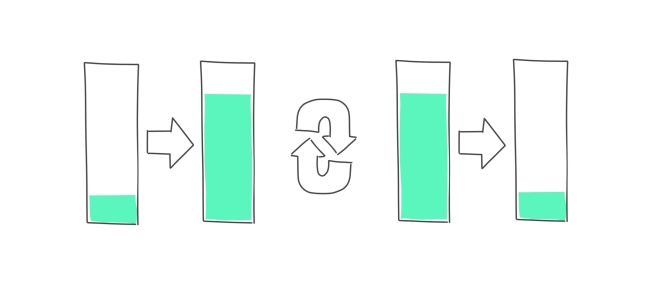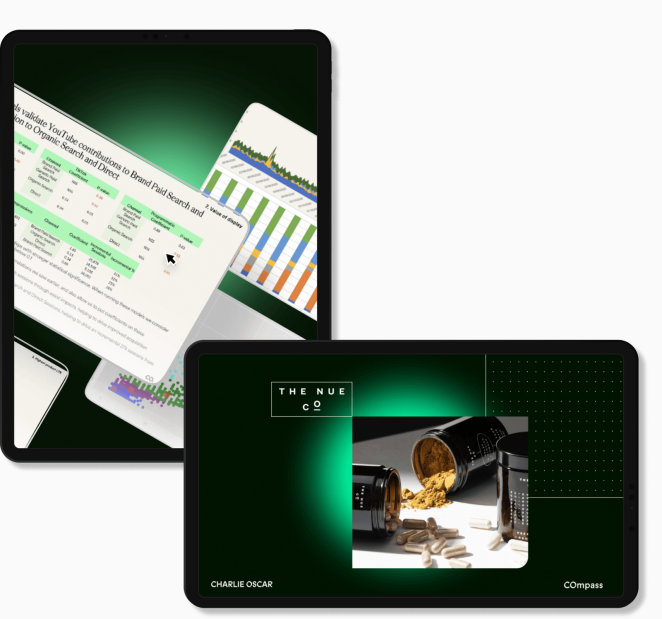
https://charlieoscar.com/
Every time AI takes a leap forward, creative industries brace for impact. Headlines prophesy mass redundancies. Copywriters start looking over their shoulders. Media planners wonder if next year’s planning deck will be a ChatGPT prompt away from irrelevance.
But while some corners of the industry are stuck in fear, others are simply getting on with using AI – intelligently, practically, and yes, disruptively. Not to deskill people, but to refocus them and clear space for strategic thinking and creativity.
At Charlie Oscar, we’re seeing this shift play out through our partnership with generative AI (GenAI) company, Fluent. We’ve integrated custom AI agents within our data technology stack and COmpass, our proprietary MMM tool for tracking marketing performance across channels with a clear line to commercial impact. What Fluent brings is speed, clarity and consistency, without stripping away the human craft. That synergy offers a useful window into how agencies could, and should evolve in the age of AI.
The 80:20 problem (and the AI that solves it)

Marketing teams have been stuck in the 80:20 trap for years. 80% of time goes into data wrangling: stitching together data sets and spreadsheets, formatting slides, rechecking numbers. The final 20% is where the value lives (insight, narrative, direction), but it’s often compressed, rushed or sacrificed to meet a deadline.
This is where GenAI, when applied intelligently, can unlock something far more interesting than just automation. By embedding Fluent into our reporting workflow, for example, we’ve flipped the 80:20 ratio. Fluent doesn’t just scrape together numbers; it understands our reporting logic, emulates our tone and builds structured, narrative-led reports in minutes. We’re now getting sharp, strategic deliverables that still feel distinctively “Charlie Oscar”, but generated in a fraction of the time.
The bigger lesson to be learnt from this is that GenAI doesn’t make our people redundant; it makes them more present. Strategists spend less time formatting and more time problem-solving. Creatives get insights earlier in the process, shaping work that’s better aligned from the outset. And our client leads walk into meetings equipped with real-time, platform-wide visibility, ready to steer, not just serve.
Which agency roles are poised for the biggest AI shake-up?
Still, there’s a temptation to view the AI revolution as a game of musical chairs. Who’s out first? The Copy Lead? The Art Director? The Production Planner?
But that framing is fear-mongering. Roles won’t disappear wholesale – they’ll evolve, fragment, hybridise. The agencies that thrive will be the ones bold enough to redesign job architecture around AI, not just bolt it onto existing workflows.
Take the strategist. Historically, their job has involved sifting through data to extract the signal from the noise. But if AI can surface that signal faster and cleaner, the strategist’s value shifts from extraction to interpretation. Their role becomes more about hypothesis testing, creative steering and commercial application.
Or the Planner. If Fluent and COmpass working together can generate full-funnel reports in minutes, planners don’t become obsolete, they become more agile. They can run more experiments, test more scenarios and move at the pace clients expect.
Then there’s the creative team. Generative visuals and copy can provide mood boards, test tone, simulate layouts. But they can’t replace the irreverence, intuition or instinct that defines standout work. What changes is where creativity begins: not with a blank page, but with better inputs.
How agencies can respond

So yes, roles are changing, but not vanishing. The opportunity is to rewire jobs around what humans do best when freed from the churn: think, interpret, create, steer.
That starts with reimagining career paths entirely. Instead of rigid job titles, agencies should embrace flexibility, designing roles that adapt as tools evolve. Teams must similarly be built around adaptability, critical thinking and human judgement, not just executional output.
You can see this rethink of roles playing out most vividly in how we measure performance. Measurement used to be a back-office task: slow, manual and owned by a small group of analysts. But COmpass changed that. When AI tools like Fluent further automate the mechanics, insight generation stops being a specialist function and becomes a shared capability across the team.
Suddenly, the responsibility for interpreting what’s working doesn’t just sit with the data team. Creative Strategists start shaping messaging based on live creative signals. Planners adjust rollouts based on real-time performance. Even junior team members can interrogate what’s landing and why – because the insights are no longer buried in spreadsheets or trapped in quarterly decks.
This is the broader shift agencies need to design for: moving intelligence closer to action. When measurement becomes more accessible, it becomes more useful, and that changes who gets to think strategically, not just who gets to present the findings.
Designing for the future
The sooner agencies can design around AI, the better we can protect what makes our work human.
At Charlie Oscar, we’ve started by redesigning our time. Over 1,000 hours a month, formerly spent on reporting, are now redirected into strategy, optimisation and creative exploration. That’s not just an efficiency win, it’s a cultural one. It says: we trust our people to do the work that matters, and we’ll give them the tools to protect that space.
The agencies that will win the next era of marketing are the ones who stop asking, “Which jobs will AI replace?” and start asking, “Which parts of our people’s jobs need to be protected and elevated?” The real disruption isn’t AI doing our work for us. It’s AI giving us the time, clarity and capacity to finally do the work we were hired for.


